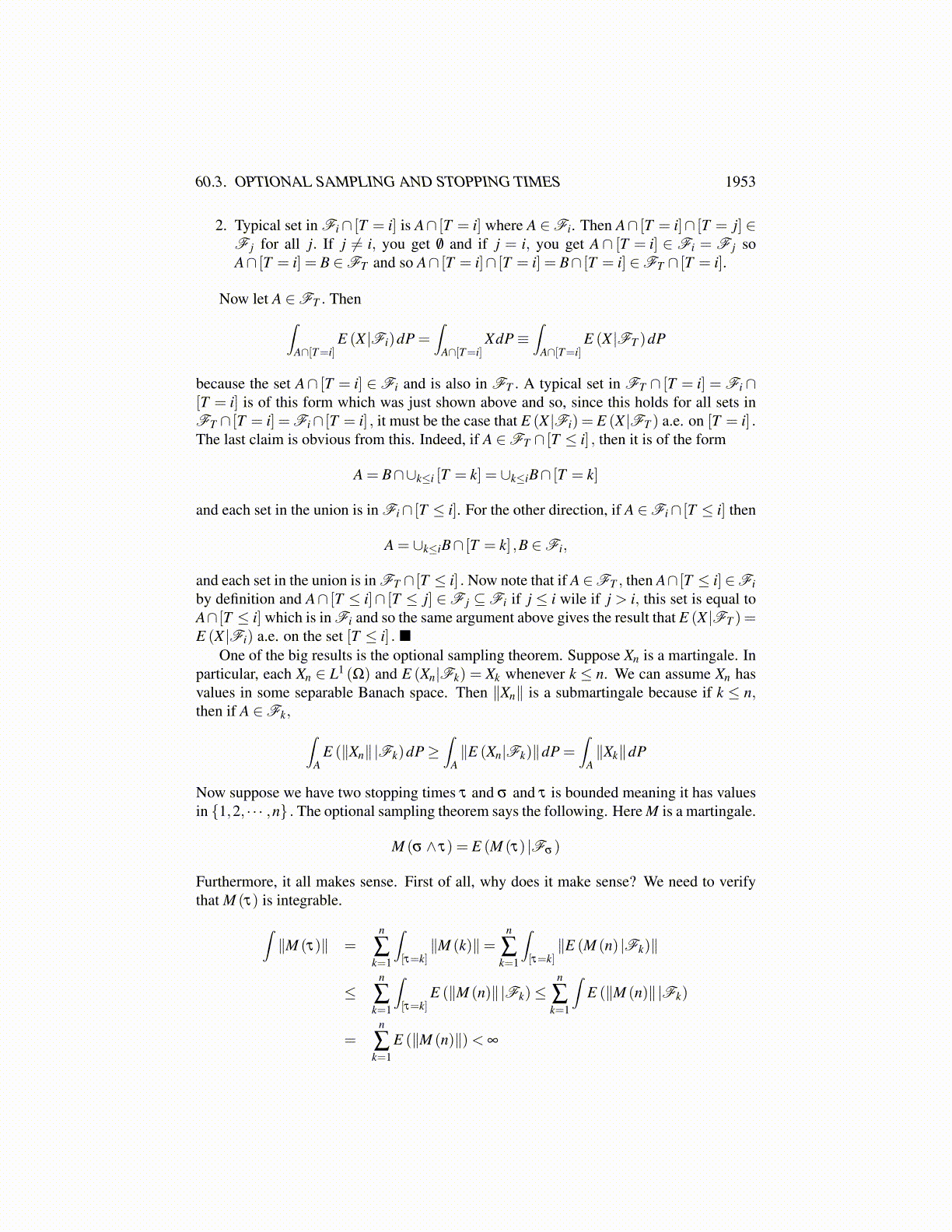
60.3. OPTIONAL SAMPLING AND STOPPING TIMES 1953
60.2.3 Doob Submartingale EstimateAnother very interesting result about submartingales is the Doob submartingale estimate.
Theorem 60.2.8 Let {(Xi,Si)}∞
i=1 be a submartingale. Then for λ > 0,
P([
max1≤k≤n
Xk ≥ λ
])≤ 1
λ
∫Ω
X+n dP
Proof: Let
A1 ≡ [X1 ≥ λ ] ,A2 ≡ [X2 ≥ λ ]\A1,
· · · ,Ak ≡ [Xk ≥ λ ]\(∪k−1
i=1 Ai
)· · ·
Thus each Ak is Sk measurable, the Ak are disjoint, and their union equals[max
1≤k≤nXk ≥ λ
].
Therefore from the definition of a submartingale and Jensen’s inequality,
P([
max1≤k≤n
Xk ≥ λ
])=
n
∑k=1
P(Ak)≤1λ
n
∑k=1
∫Ak
XkdP
≤ 1λ
n
∑k=1
∫Ak
E (Xn|Sk)dP
≤ 1λ
n
∑k=1
∫Ak
E (Xn|Sk)+ dP
≤ 1λ
n
∑k=1
∫Ak
E(X+
n |Sk)
dP
=1λ
n
∑k=1
∫Ak
X+n dP≤ 1
λ
∫Ω
X+n dP.
60.3 Optional Sampling And Stopping Times60.3.1 Stopping Times And Their Properties OverviewI will give a brief overview of the main ideas about stopping times first and then repeatthem in what follows. I think that these things are so important that it is good to have ashort synopsis of what to expect. I think that the optional sampling theorem of Doob isamazing. That is why it gets repeated quite a bit. It is one of those theorems that you readand when you get to the end, having followed the argument, you sit back and feel amazedat what you just went through. You ask yourself if it is really true or whether you madesome mistake. At least this is how it effects me.
First it is necessary to define the notion of a stopping time. If you have an increasingsequence of σ algebras {Fn} and a process {Xn} such that Xn is Fn measurable, the idea